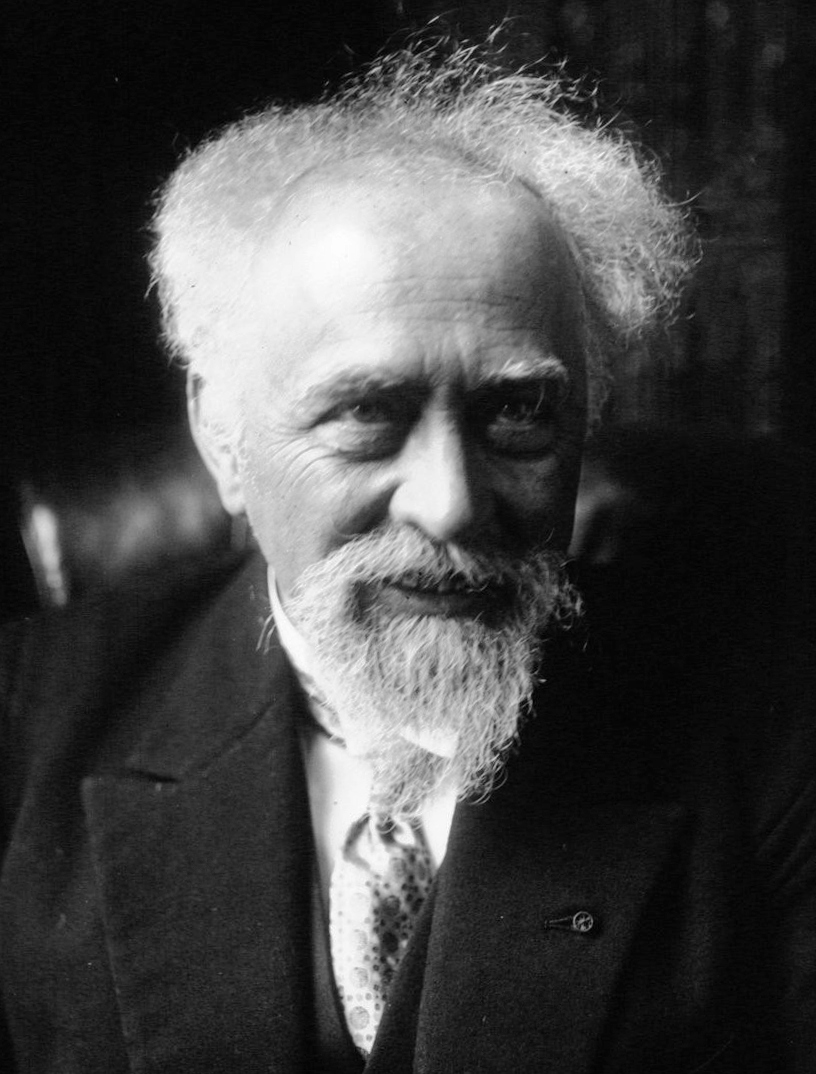|
RBCG30
rBCG30 (recombinant Bacillus Calmette-Guérin 30) is a prospective vaccine against tuberculosis created by a team headed by Marcus A. Horwitz at UCLA. It is a live vaccine, consisting of BCG genetically modified to produce abundant amounts of a 30 kDa antigen (Antigen 85B) that has been shown to produce a strong immune response in animals and humans. The vaccine completed a Phase I double-blind randomized controlled clinical trial that demonstrated that rBCG30 was safe and immunogenic; during nine months of follow-up, rBCG30, but not BCG, induced significantly increased Antigen 85B-specific immune responses in eight immunological assays (blood lymphocyte proliferation, antibody responses by ELISA The enzyme-linked immunosorbent assay (ELISA) (, ) is a commonly used analytical biochemistry assay, first described by Eva Engvall and Peter Perlmann in 1971. The assay uses a solid-phase type of enzyme immunoassay (EIA) to detect the presence ..., interferon-gamma producing CD4+ ... [...More Info...] [...Related Items...] OR: [Wikipedia] [Google] [Baidu] |
Bacillus Calmette-Guérin
Bacillus Calmette–Guérin (BCG) vaccine is a vaccine primarily used against tuberculosis (TB). It is named after its inventors Albert Calmette and Camille Guérin. In countries where tuberculosis or leprosy is common, one dose is recommended in healthy babies as soon after birth as possible. In areas where tuberculosis is not common, only children at high risk are typically immunized, while suspected cases of tuberculosis are individually tested for and treated. Adults who do not have tuberculosis and have not been previously immunized, but are frequently exposed, may be immunized, as well. BCG also has some effectiveness against Buruli ulcer infection and other nontuberculous mycobacterial infections. Additionally, it is sometimes used as part of the treatment of bladder cancer. Rates of protection against tuberculosis infection vary widely and protection lasts up to 20 years. Among children, it prevents about 20% from getting infected and among those who do get infected ... [...More Info...] [...Related Items...] OR: [Wikipedia] [Google] [Baidu] |
Vaccine
A vaccine is a biological preparation that provides active acquired immunity to a particular infectious or malignant disease. The safety and effectiveness of vaccines has been widely studied and verified. A vaccine typically contains an agent that resembles a disease-causing microorganism and is often made from weakened or killed forms of the microbe, its toxins, or one of its surface proteins. The agent stimulates the body's to recognize the agent as a threat, destroy it, and to further recognize and destroy any of the microorganisms associated with that agent that it may encounter in the future. Vaccines can be prophylactic (to pr ... [...More Info...] [...Related Items...] OR: [Wikipedia] [Google] [Baidu] |
Tuberculosis
Tuberculosis (TB) is an infectious disease usually caused by ''Mycobacterium tuberculosis'' (MTB) bacteria. Tuberculosis generally affects the lungs, but it can also affect other parts of the body. Most infections show no symptoms, in which case it is known as latent tuberculosis. Around 10% of latent infections progress to active disease which, if left untreated, kill about half of those affected. Typical symptoms of active TB are chronic cough with hemoptysis, blood-containing sputum, mucus, fever, night sweats, and weight loss. It was historically referred to as consumption due to the weight loss associated with the disease. Infection of other organs can cause a wide range of symptoms. Tuberculosis is Human-to-human transmission, spread from one person to the next Airborne disease, through the air when people who have active TB in their lungs cough, spit, speak, or sneeze. People with Latent TB do not spread the disease. Active infection occurs more often in people wi ... [...More Info...] [...Related Items...] OR: [Wikipedia] [Google] [Baidu] |
Marcus A
Marcus, Markus, Márkus or Mărcuș may refer to: * Marcus (name), a masculine given name * Marcus (praenomen), a Roman personal name Places * Marcus, a main belt asteroid, also known as (369088) Marcus 2008 GG44 * Mărcuş, a village in Dobârlău Commune, Covasna County, Romania * Marcus, Illinois, an unincorporated community * Marcus, Iowa, a city * Marcus, South Dakota Marcus is an unincorporated community in Meade County, in the U.S. state of South Dakota South Dakota (; Sioux: , ) is a U.S. state in the North Central region of the United States. It is also part of the Great Plains. South Dakota is n ..., an unincorporated community * Marcus, Washington, a town * Marcus Island, Japan, also known as Minami-Tori-shima * Mărcuș River, Romania * Marcus Township, Cherokee County, Iowa Other uses * Markus, a beetle genus in family Cantharidae * ''Marcus'' (album), 2008 album by Marcus Miller * Marcus (comedian), finalist on ''Last Comic Standing'' season ... [...More Info...] [...Related Items...] OR: [Wikipedia] [Google] [Baidu] |
University Of California, Los Angeles
The University of California, Los Angeles (UCLA) is a public university, public Land-grant university, land-grant research university in Los Angeles, California. UCLA's academic roots were established in 1881 as a Normal school, teachers college then known as the southern branch of the California State Normal School (now San Jose State University, San José State University). This school was absorbed with the official founding of UCLA as the Southern Branch of the University of California in 1919, making it the second-oldest of the 10-campus University of California system (after UC Berkeley). UCLA offers 337 undergraduate and graduate degree programs in a wide range of disciplines, enrolling about 31,600 undergraduate and 14,300 graduate and professional students. UCLA received 174,914 undergraduate applications for Fall 2022, including transfers, making the school the most applied-to Higher education in the United States, university in the United States. The university is or ... [...More Info...] [...Related Items...] OR: [Wikipedia] [Google] [Baidu] |
Bacillus Calmette-Guerin
Bacillus Calmette–Guérin (BCG) vaccine is a vaccine primarily used against tuberculosis (TB). It is named after its inventors Albert Calmette and Camille Guérin. In countries where tuberculosis or leprosy is common, one dose is recommended in healthy babies as soon after birth as possible. In areas where tuberculosis is not common, only children at high risk are typically immunized, while suspected cases of tuberculosis are individually tested for and treated. Adults who do not have tuberculosis and have not been previously immunized, but are frequently exposed, may be immunized, as well. BCG also has some effectiveness against Buruli ulcer infection and other nontuberculous mycobacterial infections. Additionally, it is sometimes used as part of the treatment of bladder cancer. Rates of protection against tuberculosis infection vary widely and protection lasts up to 20 years. Among children, it prevents about 20% from getting infected and among those who do get infected, i ... [...More Info...] [...Related Items...] OR: [Wikipedia] [Google] [Baidu] |
Kilodalton
The dalton or unified atomic mass unit (symbols: Da or u) is a non-SI unit of mass widely used in physics and chemistry. It is defined as of the mass of an unbound neutral atom of carbon-12 in its nuclear and electronic ground state and at rest. The atomic mass constant, denoted ''m''u, is defined identically, giving . This unit is commonly used in physics and chemistry to express the mass of atomic-scale objects, such as atoms, molecules, and elementary particles, both for discrete instances and multiple types of ensemble averages. For example, an atom of helium-4 has a mass of . This is an intrinsic property of the isotope and all helium-4 atoms have the same mass. Acetylsalicylic acid (aspirin), , has an average mass of approximately . However, there are no acetylsalicylic acid molecules with this mass. The two most common masses of individual acetylsalicylic acid molecules are , having the most common isotopes, and , in which one carbon is carbon-13. The molecular ... [...More Info...] [...Related Items...] OR: [Wikipedia] [Google] [Baidu] |
ELISA
The enzyme-linked immunosorbent assay (ELISA) (, ) is a commonly used analytical biochemistry assay, first described by Eva Engvall and Peter Perlmann in 1971. The assay uses a solid-phase type of enzyme immunoassay (EIA) to detect the presence of a ligand (commonly a protein) in a liquid sample using antibodies directed against the protein to be measured. ELISA has been used as a diagnostic tool in medicine, plant pathology, and biotechnology, as well as a quality control check in various industries. In the most simple form of an ELISA, antigens from the sample to be tested are attached to a surface. Then, a matching antibody is applied over the surface so it can bind the antigen. This antibody is linked to an enzyme and then any unbound antibodies are removed. In the final step, a substance containing the enzyme's substrate is added. If there was binding, the subsequent reaction produces a detectable signal, most commonly a color change. Performing an ELISA involves at lea ... [...More Info...] [...Related Items...] OR: [Wikipedia] [Google] [Baidu] |
ELISPOT
The enzyme-linked immune absorbent spot (ELISpot) is a type of assay that focuses on quantitatively measuring the frequency of cytokine secretion for a single cell. The ELISpot Assay is also a form of immunostaining since it is classified as a technique that uses antibodies to detect a protein analyte, with the word analyte referring to any biological or chemical substance being identified or measured. The FluoroSpot Assay is a variation of the ELISpot assay. The FluoroSpot Assay uses fluorescence in order to analyze multiple analytes, meaning it can detect the secretion of more than one type of protein. History Cecil Czerkinsky first described ELISpot in 1983 as a new way to quantify the production of an antigen-specific immunoglobulin by hybridoma cells. In 1988, Czerkinsky developed an ELISA spot assay that quantified the secretion of a lymphokine by T cells. In the same year, dual-color ELISpot was combined with computer imaging for the first time, which allowed for the e ... [...More Info...] [...Related Items...] OR: [Wikipedia] [Google] [Baidu] |





